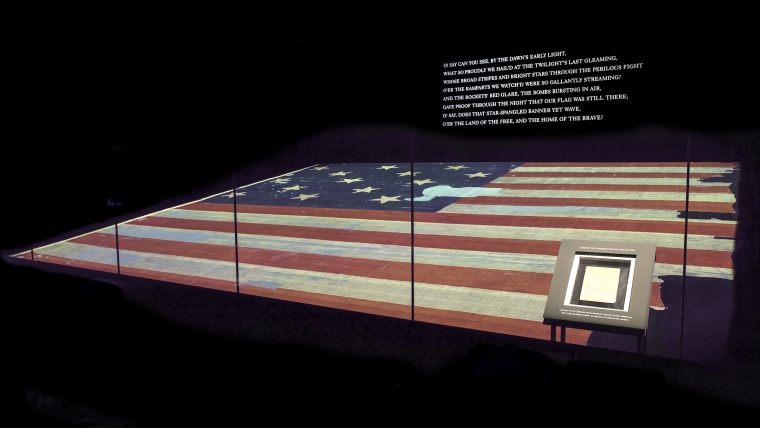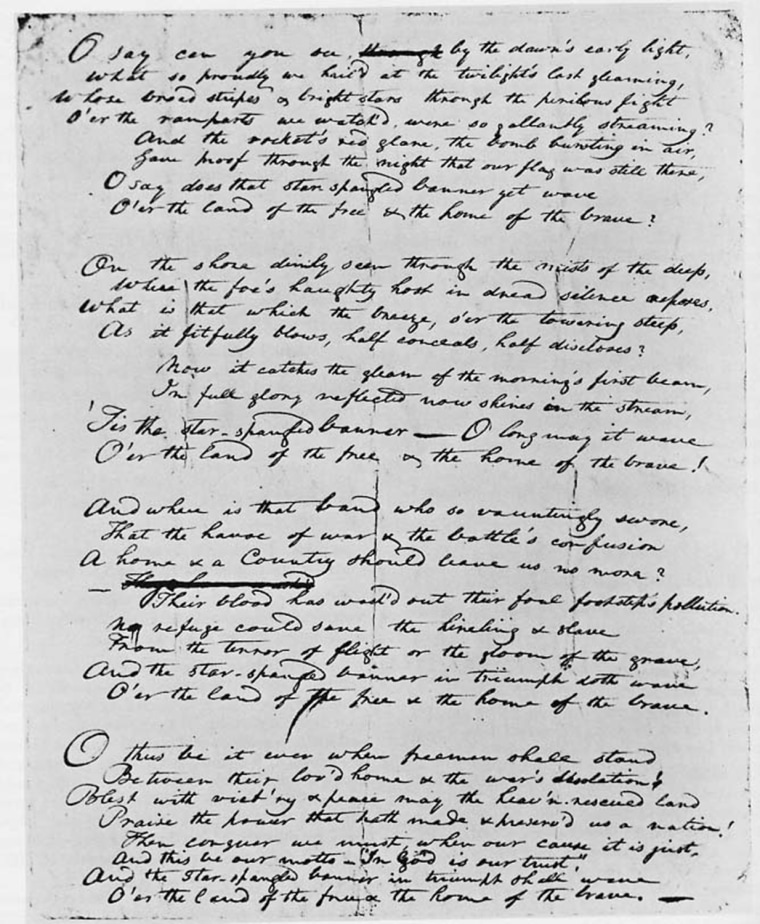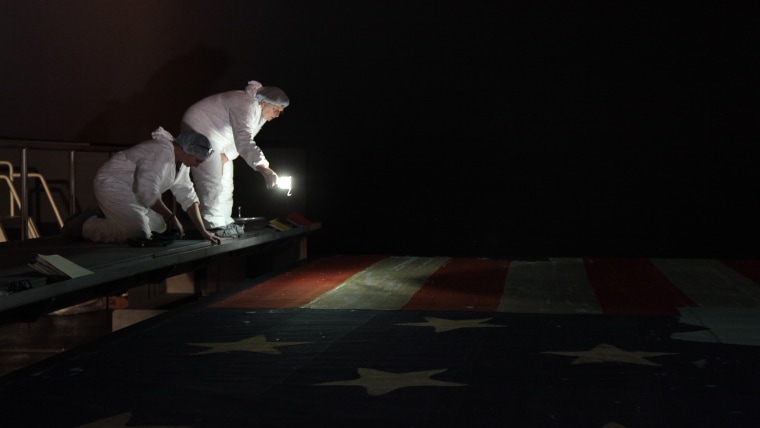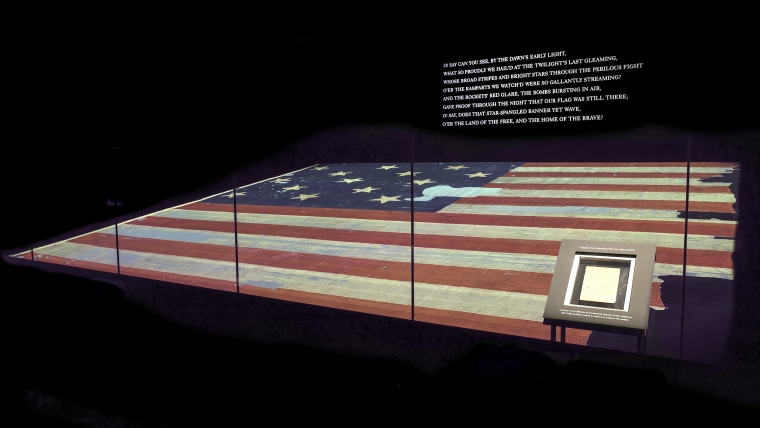
“O say can you see, by the dawn’s early light ...” Cue up “The Star-Spangled Banner” on virtually any occasion, and the 200-year-old song will put hands over hearts, remove hats from heads, and raise voices mostly in tune all across the country.
Yet many people have no idea where the national anthem — or the flag it was named for — came from. That’s something The Smithsonian Channel is hoping to rectify this Flag Day weekend with a special program, “A Star-Spangled Story: Battle for America,” just in time for the bicentennial of both.
Sign up for top Entertainment news direct to your inbox
Think you know your flag and anthem history? Test yourself below!
Where were the lyrics for “The Star-Spangled Banner” written, and what was the inspiration?
Lawyer Francis Scott Key was helping in a prisoner trade between the British and Americans in the War of 1812 when the Battle of Baltimore broke out near Ft. McHenry in 1814, says Jennifer Jones, curator for Smithsonian's National Museum of American History in Washington, D.C. Stuck on an American truce ship, Key observed the bombardment of the fort from afar. He rose the following morning and saw that the American flag was still flying, inspiring a verse he titled “Defence of Fort M’Henry.” The words were set to the tune of “To Anacreon in Heaven,” a melody widely used by lyricists at the time. Back at his hotel, Key scribbled out a total of four verses, of which only the first tends to get sung today.

How did Key's song become the national anthem?
“Within a week he had the lyrics copied and handed out to every member of the defenders of Ft. McHenry,” Jones says. Key's lyrics grew in popularity over the years, eventually becoming the song most often played at the raising of the U.S. flag. The anthem's first appearance at a sporting event was at the 1918 World Series. In the late 1920s, bandleader John Philip Sousa got behind the growing movement to find a national anthem for the country, throwing his support to "Banner." President Herbert Hoover made it official in 1931.
What happened to the flag that inspired Key’s words?
Ft. McHenry’s commander, Lt. Col. George Armistead, had commissioned Mary Pickersgill to make the flag. She used English wool bunting for the stripes, cotton for the stars and linen for the “hoist edge” that attached to the pole. Armistead’s daughter Georgiana became the flag’s caretaker after his death, and in 1873 permitted it to be displayed in a Boston exhibition. Problem was, visitors helped themselves to souvenir scraps — a common practice before the U.S. had a flag code, Jones says. Eben Appleton, Georgiana’s son, loaned the flag to the Smithsonian in 1907 for preservation and display, then officially donated the flag in 1912. The Smithsonian has since recovered a few — but not all — of the missing fragments.
How has the flag not fallen apart after 200 years?
The Smithsonian has undertaken two major conservation efforts: The first, soon after the flag was donated, involved adding a new backing to facilitate display — a backing that required approximately 1.7 million hand stitches (and six years) to affix. For decades the flag hung in the American History Museum's Flag Hall, protected by a cover that was lowered every half hour as the national anthem played. “This way, people would stop and remember that the song and flag had a connection,” Jones says.

But by 1999, the flag was in need of cleaning and additional preservation, so it was moved to a lab where experts carefully cleaned the fabric and reinforced the backing with a lightweight polyester material called Stabiltex. As the Smithsonian's website notes, "The conservation goal has not been to 'restore' or 'fix' the flag, but rather to prevent further deterioration." These days, the public can view the original Old Glory in a state-of-the-art, environmentally controlled chamber at the National Museum of American History.
How is the American flag unique?
“The flag changed over time as we added states. It was never a static object," Jones explains. "That’s still very relevant today — most nations’ flags don’t change. Ours is a flag that transformed when the nation was transformed, and the idea of transformation is something embraced by Americans.”
“A Star-Spangled Story: Battle for America” will air on the Smithsonian Channel June 14 at 9 p.m. From June 14 through July 6, Francis Scott Key’s original handwritten lyrics to "The Star-Spangled Banner" will be displayed with the flag at the National Museum of American History.
Follow Randee Dawn on Google+ and Twitter.
